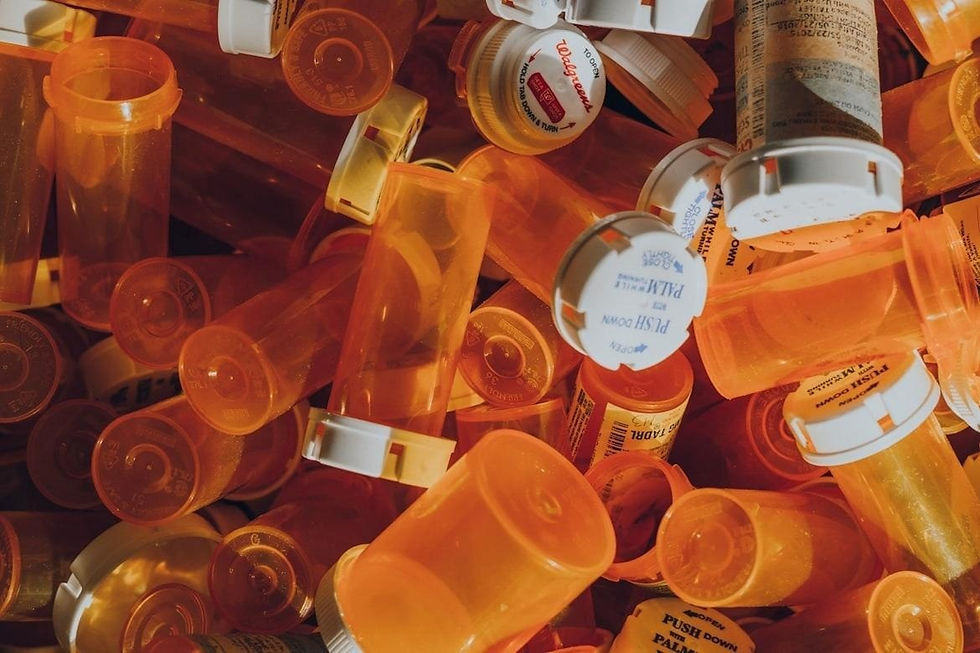Exploring Medical Waste Treatment Technologies
- mattgeorgov6
- Apr 28
- 4 min read

With the increasing demand for safer and more sustainable medical waste disposal methods, healthcare facilities are seeking innovative technologies that ensure regulatory compliance, environmental responsibility, and public safety. As medical waste volumes grow and environmental concerns intensify, it’s critical to stay ahead by understanding the most effective treatment technologies available today and the risks they could possess.
At Choice MedWaste, we’re committed to providing cutting-edge solutions that meet the highest standards in medical waste treatment and disposal. Let’s explore the most widely used and emerging technologies that are transforming medical waste management.
Why Medical Waste Treatment is Essential
Medical waste often contains viruses, sharps and other potentially infectious material that could pose a risk to public health and the environment. Without proper treatment, untreated waste can:
Contaminate water, air, and soil
Expose sanitation workers and the public to dangerous pathogens
Lead to non-compliance with OSHA, EPA, and state-specific regulations
Effective treatment technologies neutralize pathogens, reduce waste volume, and minimize environmental impact, ensuring compliance and safeguarding communities.

1. Incineration: High-Temperature Destruction of Hazardous Waste
Incineration is one of the oldest and most widely used methods for treating medical waste. Through high-temperature combustion , incineration destroys pathogens, reduces waste volume by up to 90%, and converts waste to ash.
Best for:
Pathological waste (tissues, organs, body parts)
Non Hazardous Pharmaceutical waste
Trace Chemotherapy Waste
Advantages:
Complete destruction of infectious waste
Reduces waste to inert ash, minimizing landfill impact
Meets strict regulatory guidelines for high-risk waste
Considerations:
Emission control technologies are required to reduce air pollutants
Higher operational costs compared to other methods
Constant supply issues with more and more incinerators shutting down

2. Autoclaving: Steam Sterilization for Biohazardous Waste
Autoclaving is a widely used, eco-friendly and proven method that sterilizes infectious medical waste using high-pressure steam at283 degrees Farenheit for 240–60 minutes. This process effectively kills bacteria, viruses, and other pathogens, making waste safe for landfill disposal.
Best for:
Biohazardous waste (contaminated gloves, gowns, gauze)
Laboratory waste
Sharps waste
Advantages:
Environmentally friendly, using only steam and pressure
Lower operating costs than incineration
Reduced risk of harmful emissions
Reduced risk of employee injury risks
You can recycle the clean plastics, sharps and material after treatment
Considerations:
Not suitable for hazardous chemicals or pharmaceutical waste
Requires proper segregation to prevent contamination

3. Ozone Treatment: Innovative Disinfection Using Oxygen
Ozone treatment is an emerging technology that uses ozone (O₃) to disinfect medical waste. This Oxidation method exposes waste to ozone gas, breaking down cell walls of microorganisms and neutralizing pathogens effectively.
Best for:
Biohazardous and infectious waste without liquids that are broken down via shredding
Advantages:
Chemical-free and environmentally safe
Considerations:
Not ideal for pharmaceutical or chemical waste
Requires advanced ozone generation and monitoring systems since Ozone is bad for the environment and employees
Requires shredding of untreated medical waste to increase surface area of the material so oxidation can successfully reach all aspects of the medical waste.
Have to test for bioaerosols(airborne viruses) due to shredding untreated waste
Large risk of ozone treatment not penetrating inside syringes, small vials or other material that either falls through the shredder or is encapsulated by plastic
Ozone does not penetrate items. It has to treat the surface
Slow throughput

4. Pyrolysis: Transforming Waste Through Thermal Decomposition
Pyrolysis is a cutting-edge thermal technology that decomposes medical waste in the absence of oxygen at temperatures between 400°C and 800°C. Instead of incinerating waste, pyrolysis transforms it into gas, liquid, and solid residues that can be repurposed or safely disposed of.
Best for:
Pharmaceutical and some chemical waste
Hazardous waste with organic components
Medical Waste
Pathological, Trace Chemotherapy and Non Hazardous Pharmaceutical Waste
Advantages:
Converts waste into usable by-products (syngas, bio-oil, and char)
Lower emissions than traditional incineration
Reduces waste volume significantly
Considerations:
Requires specialized equipment and operational expertise
Initial investment costs can be high
Slow throughput
Implementing the Right Medical Waste Treatment for Your Facility
When selecting a medical waste treatment technology, it’s essential to consider:
Type of Waste: Match the technology to the specific waste stream generated by your facility.
Regulatory Compliance: Ensure that the chosen method meets OSHA, EPA, and state regulations.
Environmental Impact: Prioritize technologies that minimize emissions and reduce landfill waste.
Cost Efficiency: Balance the cost of implementation with the long-term operational benefits.
Efficacy Test Data: Ensure the efficacy test data is using actual medical waste to test if the machine treats the biological indicators. It is also beneficial to use the biological indicators in tubes rather than strips. This allows you to prove waste inside syringes, vials, etc. can be reached by the treatment technology.
Safety: How safe is the machine for the employees using it?
Choice MedWaste: Leading the Way in Advanced Medical Waste Treatment
At Choice MedWaste, we stay at the forefront of emerging waste treatment technologies, offering:
Customized Waste Treatment Plans: Tailored solutions to meet your facility’s needs
Regulatory Compliance Assurance: Guaranteed compliance with state and federal regulations
Eco-Friendly and Sustainable Practices: Commitment to minimizing environmental impact
As the medical waste treatment landscape continues to evolve, Choice MedWaste is dedicated to keeping your facility informed, compliant, and prepared for the future. Contact us today to learn how we can help implement the latest medical waste treatment technologies that ensure safety, compliance, and sustainability.






Comments